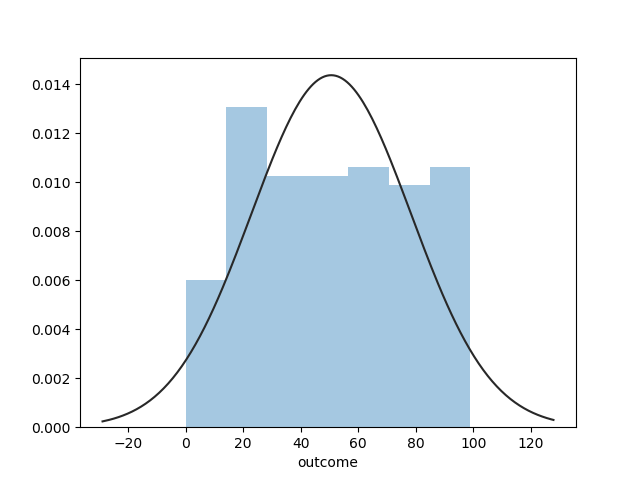To prepare a little toy example:
import pandas as pd
import numpy as np
high, size = 100, 20
df = pd.DataFrame({'perception': np.random.randint(0, high, size),
'age': np.random.randint(0, high, size),
'outlook': pd.Categorical(np.tile(['positive', 'neutral', 'negative'], size//3+1)[:size]),
'smokes': pd.Categorical(np.tile(['lots', 'little', 'not'], size//3+1)[:size]),
'outcome': np.random.randint(0, high, size)
})
df['age_range'] = pd.Categorical(pd.cut(df.age, range(0, high+5, size//2), right=False,
labels=["{0} - {1}".format(i, i + 9) for i in range(0, high, size//2)]))
np.random.shuffle(df['smokes'])
Which will give you something like:
In [2]: df.head(10)
Out[2]:
perception age outlook smokes outcome age_range
0 13 65 positive little 22 60 - 69
1 95 21 neutral lots 95 20 - 29
2 61 53 negative not 4 50 - 59
3 27 98 positive not 42 90 - 99
4 55 99 neutral little 93 90 - 99
5 28 5 negative not 4 0 - 9
6 84 83 positive lots 18 80 - 89
7 66 22 neutral lots 35 20 - 29
8 13 22 negative lots 71 20 - 29
9 58 95 positive not 77 90 - 99
Goal: figure out likelihood of outcome, given {perception, age, outlook, smokes}.
Secondary goal: figure out how important each column is in determining outcome.
Third goal: prove attributes about distribution (here we have randomly generated, so a random distribution should imply the null hypothesis is true?)
Clearly these are all questions findable with statistical hypothesis testing. What's the right way of answering these questions in pandas?



categorical variable treatment. The question can further be enriched by asking how to measure the interplay between categorical and continuous variables. Think about it. – Montane